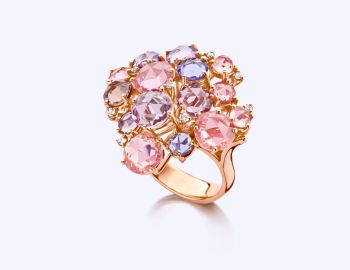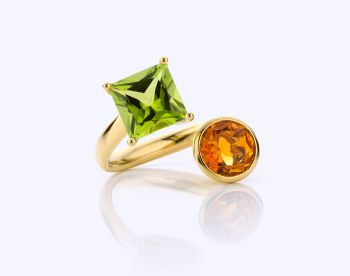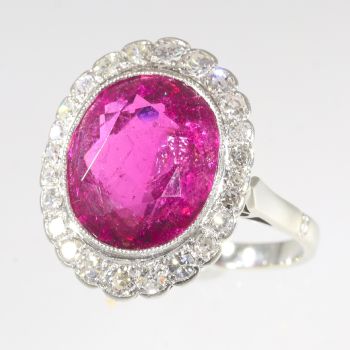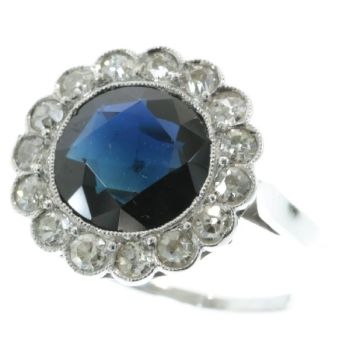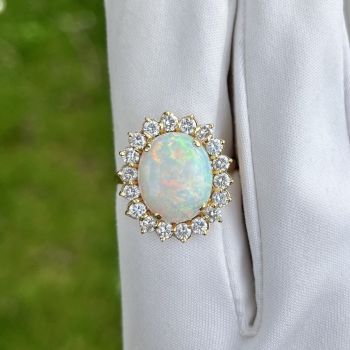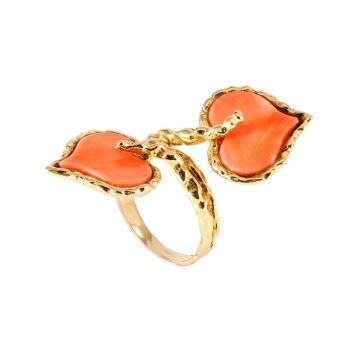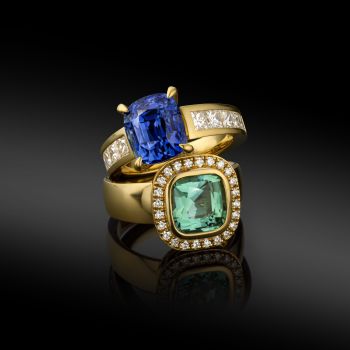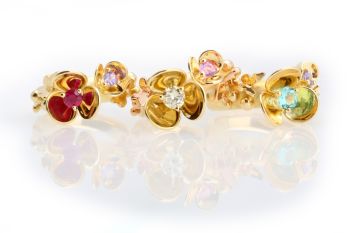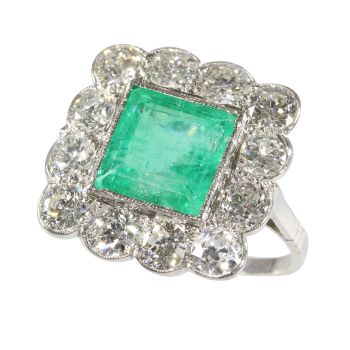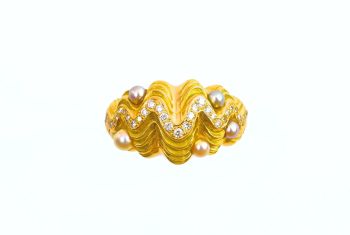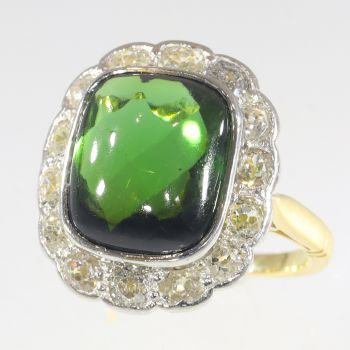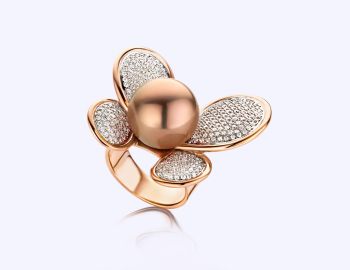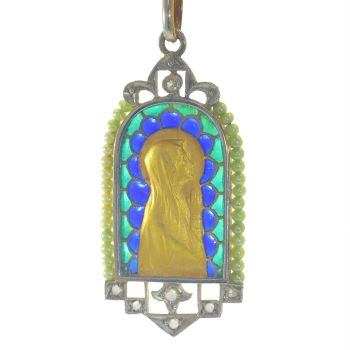Wièse's 4.86ct Diamond Ring, a Neo-Renaissance Legacy 1900
Wièse
DiamanteOroPiedra preciosa
€ 120.000
Adin Fine Antique Jewellery
- Sobre la obra de arte
This Late-Victorian Neo-Renaissance ring by Jules Wièse is a museum-quality marvel in Haute Joaillerie. Crafted in France from 18K yellow gold and platinum, the ring incorporates two putti, symbolic of love and innocence, adding layers of historical andemotional meaning. At its core lies a 4.86-carat old European cut diamond. Wièse's craftsmanship is renowned, even cited in multiple academic books on 19th-century jewellery. Authenticated by Wièse's signature and French hallmarks, this ring is apinnacle of craftsmanship and a timeless heirloom, captivating collectors and destined for future generations to be amazed by its uniqueness.
Antique jewelry object group
ring
Condition
excellent condition
more info on our condition scale
Country of origin
France
Style
Victorian / Neo Renaissance
more info on styles
Style specifics
Neo-Renaissance jewellery refers to pieces inspired by the art and culture of the Renaissance period, which spanned from the 14th to the 17th centuries. Created primarily in the late 19th and early 20thcenturies, Neo-Renaissance jewellery aimed to replicate the grandeur and intricacy of its historical predecessor. Artisans of this movement often utilised traditional materials like gold, enamels, and precious gemstones, meticulously crafting them into elaborate designs that featured a variety of motifs, such as mythological scenes, putti, and intricate floral patterns.
The Neo-Renaissance movement was largely a European phenomenon, with France being a key player in its development. Renowned jewellers like Jules Wièse elevated the craft to new heights, creating pieces that were not mere replicas but original works of art that incorporated Renaissance elements. These jewellery pieces were considered the epitome of luxury and sophistication, valued not just for their materials but also for their exquisite craftsmanship and detailed ornamentation. They are now highly sought after by collectors and can be seen as timeless heirlooms, capable of captivating future generations with their unique blend of history and artistry.
Period
ca. 1900
Events & facts of this era, poetry of this era, fashion of this era.
Source of inspiration
Renaissance
Theme
two putti, one male, one female
The use of two putti—one male, one female—could symbolise romantic or divine love, a union of opposites, or the harmony and balance achieved through such a union.
Material
18K yellow gold and platinum (touchstone tested)
more info on precious metals
Extra information
Louis Wièse was the son of famed 19th-century French jeweller Jules Wièse and continued his father's legacy of exceptional craftsmanship. Like his father, Louis excelled in creating intricate designs inspired by historical and religious themes. His work, often executed in gold and featuring detailed ornamentation, represents some of the finest examples of 19th-century French jewellery. Louis Wièse contributed to maintaining thefamily's esteemed reputation, with pieces today equally coveted by collectors and displayed in significant museums globally.
Diamonds
One old European cut diamond with an estimated weight of ± 4.86ct colour and clarity L, si1 (see pictures for HRD certificat)
Birthstones
Diamond is the birthstone (or month stone) for April.
more info on birthstones
Brand
Wièse
Signature
Wièse (see pictures)
Hallmarks
Wièse mastermark and the French control mark for 18K gold representing an eagle's head that was in use in France from about 1838. (see pictures for close ups)
more info on hallmarks
Dimensions
width top of ring 1,37 cm (0,54 inch)
see picture with a ruler in millimeters and inches
Weight
10,70 gram (6,88 dwt)
Ring size 52
more info on ring sizes
Adin Reference Nº
20027-0039
Copyright photography
Adin, fine antique jewellery
Sources
- Le Bijouterie Francaise au XIX Siècle par Henri Vever (volume 2 page 213 for similar ring)
- Henri Vever French Jewelry of the Nineteenth Century (page 1013)
- Jules Wièse und sien Atelier (similar rings in the book)
- Pariser Schmuck (page 49 for a ring in the same idea & page 44 for the Wièse mark)
- Dictionnaire des joailliers, bijoutiers et orfèvres en France de 1850 à nos jours By: L'École des Art Joailliers avec le soutien de Van Cleef & Arpels.
Additional information
our latest acquisitions
jewelry glossary
wall of fame
visit us in Antwerp
subscribe to our mailinglist
- Sobre el artista
En la segunda mitad del siglo XIX, los orfebres comenzaron a inspirarse cada vez más en épocas pasadas, adoptando artefactos antiguos y medievales mientras revivían técnicas olvidadas hace mucho tiempo. En Francia, los estilos neogótico y renacentista ganaron especial popularidad, fusionándose en lo que se conoció como el "estilo catedral".
Una de las luminarias de este movimiento de diseño fue Jules Wièse (1818-1890). Hizo el viaje de Berlín a París en 1839, iniciando su carrera en el renombrado taller del joyero y platero Froment-Meurice. Este artesano emprendedor ascendió rápidamente de rango y alcanzó el puesto de director de taller en 1844. Al año siguiente, dio el paso audaz de establecer su propio taller en el número 7 de la rue Jean-Pain-Mollet. Wièse pronto se hizo un hueco distinto, especializándose en la creación de joyas y objetos de arte intrincadamente tallados en plata y oro.
Su destacada artesanía no pasó desapercibida. Wièse recibió elogios en la Exposición Industrial de 1849 y, en 1855, recibió una medalla de primera clase en la Exposición Universal. Un crítico, al comentar su trabajo en la exposición de 1855, señaló que "la importancia de sus piezas y sus atrevidos experimentos revelan una apreciación del arte y la belleza que merece el reconocimiento del jurado, incluso en las obras más sencillas". La notable habilidad y originalidad de Wièse pronto le valieron el reconocimiento internacional cuando fue honrado con una medalla de distinción en la Gran Exposición de Londres de 1862.
El trabajo de Wièse fue una fusión armoniosa de motivos medievales y métodos artesanales tradicionales. Se inspiró en la leyenda artúrica, los cuentos de caballerías, la arquitectura gótica y diversas formas de arte de la época. Sus piezas de joyería a menudo tenían un acabado de óxido de mercurio cuidadosamente aplicado, lo que les daba una apariencia antigua y ennegrecida. En el caso de los artículos de oro, a veces se utilizaba colorete de joyero para darles el aspecto de tesoros recién desenterrados.
En 1880, Jules Wièse se jubila y pasa las riendas del taller a su hijo Louis. Descrito por Vever como "un artista excepcionalmente modesto y verdaderamente talentoso", Louis continuó produciendo joyas de estilo revivalista hasta el cierre de la firma en 1923.
Las joyas de Wièse, conocidas por su encantadora excentricidad y exquisita artesanía, siguen siendo muy codiciadas y buscadas por coleccionistas y conocedores. Se pueden encontrar ejemplos de su trabajo en instituciones estimadas como el Museo Británico, el Museo Victoria & Albert y el Museo de Artes Decorativas de París.
¿Está interesado en comprar esta obra de arte?
Artwork details
Related artworks
- 1 - 4 / 24
Vincent Cober
Geelgouden ringen bezet met diamanten blauwe Saffier en Tourmalijn2022
Precio a consultarVincent Cober
1 - 4 / 24- 1 - 4 / 24
- 1 - 4 / 12




































